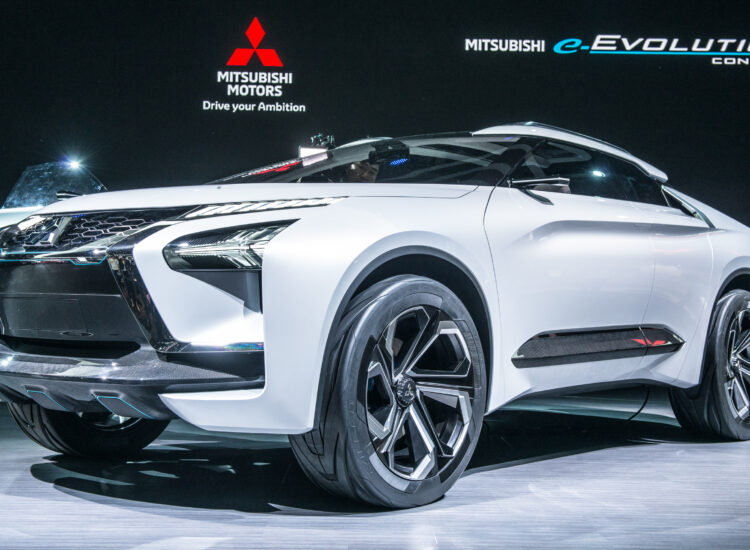The Ferrari 488 GTB, an iconic model from the legendary Italian marque, represents a pivotal moment in Ferrari’s history. As the successor to the acclaimed 458 Italia, the 488 GTB not only had large shoes to fill but also marked Ferrari’s return to forced induction for its mid-engine V8 sports cars, a formula not seen since the iconic F40. This transition to a turbocharged engine, while initially met with some skepticism from purists, ultimately proved to be a masterstroke, delivering unprecedented levels of performance and driving engagement. The 488 GTB is more than just a car; it’s a statement of Ferrari’s engineering prowess, design philosophy, and unwavering commitment to pushing the boundaries of automotive excellence. This in-depth exploration will delve into the various facets of the Ferrari 488 GTB, examining its history, design, performance, driving experience, and its lasting legacy in the world of supercars.
Toc

A Lineage of Innovation: History and Development
The Ferrari 488 GTB was officially unveiled at the Geneva Motor Show in 2015, marking the 40th anniversary of Ferrari’s first mid-engine V8 model, the 308 GTB. This historical context is significant, as it underscores Ferrari’s long-standing tradition of innovation and its dedication to the mid-engine layout for its performance-oriented models. The “488” in its name refers to the 488 cubic centimeters displacement per cylinder of its engine, while “GTB” stands for Gran Turismo Berlinetta, a classic Ferrari designation for coupe models.
The 488 GTB’s arrival signaled Ferrari’s strategic shift towards turbocharging in its mainstream sports car range. While the legendary F40 did employ turbocharging in the 1980s and 90s, its successors had primarily relied on naturally aspirated engines. The 488 GTB marked the beginning of a new era, driven by the need to meet increasingly stringent emissions regulations and to deliver even greater performance. This transition was not merely about adhering to environmental standards; it was about harnessing the potential of turbocharging to enhance the driving experience, providing more torque, responsiveness, and overall power.
The development of the 488 GTB was a comprehensive undertaking, involving Ferrari’s in-house design center. The aim was to create a car that was not only faster and more powerful than its predecessor but also more engaging and accessible to drive. Ferrari engineers focused on every aspect of the car, from the engine and chassis to the aerodynamics and electronics, ensuring that each element worked in harmony to deliver a truly exceptional driving experience. The 488 GTB was produced from 2015 to 2019, before being succeeded by the Ferrari F8 Tributo, continuing the lineage of Ferrari’s mid-engine V8 supercars.
Sculpted by Aerodynamics: Exterior and Interior Design
The design of the Ferrari 488 GTB is a masterclass in form following function. Penned by Flavio Manzoni and the Ferrari Styling Centre, the 488 GTB’s aesthetics are not just about visual appeal; they are deeply rooted in aerodynamic efficiency and performance optimization. The car’s lines are aggressive and purposeful, reflecting its high-performance nature while retaining the elegance and beauty synonymous with the Ferrari brand.
Exterior Design:
The 488 GTB’s exterior is characterized by its sculpted surfaces, sharp lines, and prominent air intakes. Compared to its predecessor, the 458 Italia, the 488 GTB features a more muscular and less curvaceous design, with a greater emphasis on aerodynamic elements. The front of the car is dominated by a large front splitter and wide air intakes, divided by a central splitter, which improves airflow to the radiators and enhances downforce. Large side air intakes, a hallmark of mid-engine Ferraris, are not just visually striking but also crucial for feeding air to the turbocharged engine and cooling system.
The rear of the 488 GTB is particularly distinctive, featuring a blown rear spoiler integrated into the rear decklid and large vents to extract hot air from the engine bay. The iconic round taillights, a Ferrari design cue, are present, and the rear diffuser is aggressively sculpted to manage airflow and generate downforce. The overall design is a testament to Ferrari’s expertise in aerodynamics, seamlessly blending form and function to create a car that is both beautiful and incredibly efficient at high speeds.
Interior Design:
The interior of the Ferrari 488 GTB is a driver-focused environment, designed to provide both comfort and functionality. The cabin is crafted with premium materials, including fine leather, carbon fiber, and meticulously stitched details, reflecting Ferrari’s commitment to luxury and craftsmanship. The layout is intuitive, with all essential controls within easy reach of the driver.
The steering wheel is a central command center, housing many of the car’s functions, including the turn signals, windshield wipers, headlights, and the Manettino dial, which allows the driver to select different driving modes. This concentration of controls on the steering wheel is a Ferrari tradition, aimed at minimizing distractions and keeping the driver focused on the road. The instrument cluster is clear and informative, providing essential driving data at a glance. While storage space is admittedly limited, as is typical in most Ferraris, the focus is firmly on the driving experience, with every element of the interior designed to enhance the connection between driver and machine. The seats are supportive and comfortable, designed to hold occupants securely during spirited driving while remaining comfortable for longer journeys.
1. https://suvwars.com/the-ferrari-f8-tributo-a-grand-finale-for-maranellos-v8-masterpiece
2. https://suvwars.com/review-of-acura-mdx-2023-a-spectacular-makeover-in-terms-of-design
3. https://suvwars.com/the-ferrari-812-gts-an-ode-to-open-top-v12-grand-touring
4. https://suvwars.com/review-of-porsche-cayenne-2023
5. https://suvwars.com/review-of-mazda-cx-60-2023-modern-luxury
Unleashing Turbocharged Fury: Performance and Specifications
At the heart of the Ferrari 488 GTB lies a technological marvel: a 3.9-liter twin-turbocharged V8 engine. This engine, part of Ferrari’s F154 engine family, is a departure from the naturally aspirated V8s that had become synonymous with Ferrari’s mid-engine sports cars. However, this turbocharged powerplant delivers performance figures that are nothing short of breathtaking.

Engine and Performance Metrics:
- Engine Type: 90-degree V8, Twin-Turbocharged, Dry Sump
- Displacement: 3,902 cc (238.1 cu in)
- Bore and Stroke: 86.5 mm x 83 mm
- Maximum Power: 670 CV (661 HP / 492 kW) @ 8,000 rpm
- Maximum Torque: 760 Nm (560 lb-ft) @ 3,000 rpm (in 7th gear)
- Specific Output: 172 cv/l
- Compression Ratio: 9.4:1
- Transmission: 7-speed dual-clutch
These specifications translate into phenomenal performance. The Ferrari 488 GTB can accelerate from 0 to 100 km/h (0-62 mph) in a mere 3.0 seconds, and reach 200 km/h (124 mph) in just 8.3 seconds. Its top speed is officially stated as over 330 km/h (205 mph). The engine’s responsiveness is remarkable, with minimal turbo lag, delivering power across the rev range. The 7-speed dual-clutch transmission ensures lightning-fast gear changes, contributing to the car’s blistering acceleration and seamless power delivery.
Fuel Efficiency and Emissions:
Despite its immense power, the 488 GTB also exhibits a degree of efficiency, thanks to the turbocharging technology. Fuel consumption figures are around 12.9 L/100km (combined cycle), and CO2 emissions are rated at 294 g/km (combined cycle). While not exactly “economical,” these figures are impressive for a car with such performance capabilities, highlighting the efficiency gains achieved through turbocharging.
An Immersive Experience: Driving Dynamics and Handling
The Ferrari 488 GTB is engineered to deliver not just speed, but also an incredibly engaging and rewarding driving experience. Ferrari’s engineers have meticulously tuned every aspect of the car’s dynamics to create a machine that is both thrilling on the track and surprisingly docile on the road.
Handling and Agility:
The 488 GTB’s chassis is stiff and lightweight, providing a solid foundation for its exceptional handling. The car’s mid-engine layout contributes to its balanced weight distribution, enhancing agility and responsiveness. Advanced electronic systems, including Ferrari’s Side Slip Control (SSC) and E-Diff, work seamlessly to manage power delivery and optimize traction, allowing drivers of varying skill levels to extract the most from the car’s performance. The steering is precise and communicative, providing excellent feedback and allowing the driver to feel intimately connected to the road.
Driving Modes and Manettino:
The Manettino dial on the steering wheel is a key element of the 488 GTB’s driving experience. It allows the driver to select different driving modes, ranging from “Wet” for maximum stability in low-grip conditions, to “Sport” for everyday driving, “Race” for track-focused performance, and “CT Off” and “ESC Off” for maximum driver involvement with reduced or no electronic assistance. Each mode progressively alters the car’s engine mapping, suspension settings, and electronic aids, tailoring the driving experience to different conditions and driver preferences. In “Race” mode, the 488 GTB truly comes alive, unleashing its full potential and providing an exhilarating track experience.
Everyday Drivability:
Despite its supercar credentials, the Ferrari 488 GTB is surprisingly comfortable and easy to drive in everyday situations. The suspension, even in its sportier settings, manages to absorb bumps and imperfections in the road surface effectively. The engine is tractable at low speeds, and the dual-clutch transmission provides smooth and effortless gear changes in automatic mode. While it’s not designed for mundane commutes, the 488 GTB is far from being a temperamental or uncomfortable machine, making it more versatile than many might expect.
1. https://suvwars.com/review-of-porsche-cayenne-2023
2. https://suvwars.com/the-ferrari-california-t-a-turbocharged-renaissance-of-italian-grand-touring
3. https://suvwars.com/the-ferrari-812-gts-an-ode-to-open-top-v12-grand-touring
4. https://suvwars.com/review-of-lincoln-nautilus-2023
5. https://suvwars.com/review-of-audi-q7-2023-luxury-sports-car
Stepping Up the Game: 488 GTB vs. 458 Italia
The Ferrari 488 GTB was designed to surpass its predecessor, the 458 Italia, in every measurable way. While the 458 Italia was lauded for its naturally aspirated V8 and exceptional driving dynamics, the 488 GTB took performance and technology to a new level, primarily through the adoption of turbocharging.
Engine and Performance:
The most significant difference between the two models lies under the hood. The 458 Italia was powered by a 4.5-liter naturally aspirated V8, renowned for its high-revving character and intoxicating sound. The 488 GTB, in contrast, features a smaller 3.9-liter twin-turbocharged V8. Despite the reduction in displacement, the turbocharged engine delivers significantly more power and torque. The 488 GTB boasts 661 horsepower compared to the 458 Italia’s 562 horsepower, and a massive 560 lb-ft of torque versus the 458’s 398 lb-ft. This translates to quicker acceleration, greater mid-range punch, and an overall more potent performance.
Driving Experience:
While the 458 Italia was celebrated for its razor-sharp handling and naturally aspirated engine’s responsiveness, the 488 GTB offers a different, yet equally compelling, driving experience. The turbocharged engine provides a broader torque curve, making the 488 GTB feel more muscular and effortless in everyday driving. The advanced electronic systems in the 488 GTB, such as Side Slip Control, enhance its handling capabilities, making it arguably more accessible and forgiving at the limit than the 458 Italia. Some purists might miss the high-revving nature and soundtrack of the naturally aspirated 458, but the 488 GTB counters with a more versatile and ultimately faster package.
Design and Technology:
The design of the 488 GTB is an evolution of the 458 Italia’s, with sharper lines and a more aggressive stance. Aerodynamic efficiency was a primary focus in the 488 GTB’s design, resulting in a car that generates significantly more downforce. Technologically, the 488 GTB is more advanced, featuring updated electronics, infotainment systems, and driving aids. While both cars are exceptional Ferraris, the 488 GTB represents a significant step forward in terms of performance, technology, and overall capability.
Market Value and Ownership: Price and Legacy
When new, the Ferrari 488 GTB carried a significant price tag, reflecting its status as a high-performance supercar. The base price was in the region of $260,000, with options and customization pushing the price considerably higher. Today, on the used market, the Ferrari 488 GTB remains a highly sought-after model, with prices varying depending on mileage, condition, and options. The average sale price for a 488 GTB is around $242,971, with some examples selling for as low as $185,000. This depreciation, while still representing a substantial investment, makes the 488 GTB a more accessible entry point into Ferrari ownership compared to newer models.
Legacy and Impact:
The Ferrari 488 GTB’s legacy is firmly cemented as a pivotal model in Ferrari’s history. It successfully ushered in the turbocharged era for Ferrari’s mainstream sports cars, demonstrating that forced induction could deliver not only enhanced performance but also a thrilling and engaging driving experience. The 488 GTB set a new benchmark for mid-engine V8 supercars, influencing subsequent Ferrari models and the broader supercar landscape. Its combination of breathtaking performance, advanced technology, and striking design ensures its place as a modern classic, admired by enthusiasts and collectors alike. The 488 GTB is more than just a successor to the 458 Italia; it is a testament to Ferrari’s relentless pursuit of innovation and its ability to evolve while staying true to its core values of performance, passion, and driving pleasure. It remains a highly desirable and respected supercar, embodying the spirit of the Prancing Horse in the turbocharged age.














